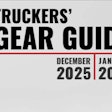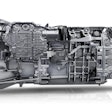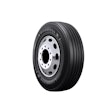With the prospect of rising fuel costs continuing for the foreseeable future, it's becoming crucial for drivers to try to squeeze more miles out of their diesel fuel. Drivers are facing drastic increases in the price of fuel with diesel now selling at over a 25% premium as compared to this time last year. That equates to a huge chunk of change. For example, when filling up 320 gallons (160 in each saddle/tank), the cost has skyrocketed from a national average of $816 to $1,015 per fill up.
With those price jumps in mind, taking advantage of every opportunity to stretch your miles per gallon is critical. Fortunately, there are some things you can do to keep cash in your pocket and out of your fuel tank.
Regulate Your Speed
Time is money. But sometimes, faster isn’t better. A truck traveling at 75 mph consumes 27% more fuel than one going 65 mph. Uneven acceleration adds to this percentage. When you accelerate, you burn fuel. But the faster you accelerate, the more fuel you burn. Accelerating and braking smoothly and gradually while trying to maintain a constant speed can save you big dollars over time.
Check and Inflate Your Tires Regularly
When your tires are properly inflated, your fuel efficiency improves. Every 1 psi drop in pressure that your tires have can lower your fuel mileage by .4%. Properly inflated tires also have a longer lifespan and are safer on the road.
Improve Aerodynamics
Around 50% of a truck’s fuel is used to overcome aerodynamic drag when traveling at highway speeds. NASA studies had proven back in the 1980's that streamlining the front, rear and undercarriage of a rectangular vehicle can reduce fuel wasting drag by over 30%. If your truck has roof-mounted or side-mounted air deflectors, you can adjust them to guide air over the highest part of your trailer, around, and under your rig. If you have an uneven load height, this should be at the front of the trailer.
Avoid Idling Your Truck
Too often, drivers leave their trucks idling – while they run a quick errand, to maintain temperature, or simply because they think it will save them fuel. It is a common misconception that restarting a vehicle uses more fuel than letting it idle. But just 10 seconds of idling wastes more fuel than simply restarting the engine. You should never let your semi-truck idle for longer than five minutes. On average, one hour of idling will burn a gallon of fuel. That same hour per day for a year can cost you 64,000 miles in engine wear. If your truck is going to be sitting for a while, turn it off. It’s one of the easiest ways to save fuel and increase the life of your engine.
Don’t Overfill Your Tank
You may think that topping off your tank is the best bang for your buck, but that’s not the case. A tank filled to absolute capacity can expand and overflow when the fuel is heated. Overflow is not only wasteful but can be dangerous to other drivers on the road. The extra fuel can also add excess weight, which slows down the vehicle. Instead of topping off your tank, fill it to 95% capacity, just to the top of the neck under the filler cap.
Use a Quality Fuel Additive
One thing that may not come to mind when you think about fuel economy is the cleanliness of your fuel system. But injector deposits can lead to coking and fouling, and without a clean spray pattern from your injectors, you are wasting fuel. Using an additive that restores lubricity and fights to keep your engine free of harmful deposits can help ensure your vehicle is operating at peak efficiency. One such product to aid in this endeavor is Howes Diesel Defender with IDX4 Detergent. It cleans and prevents future deposits from forming on your injectors, while providing maximum lubricity to your fuel. Howes is the only product that guarantees a minimum 5% increase in fuel economy when used regularly.











